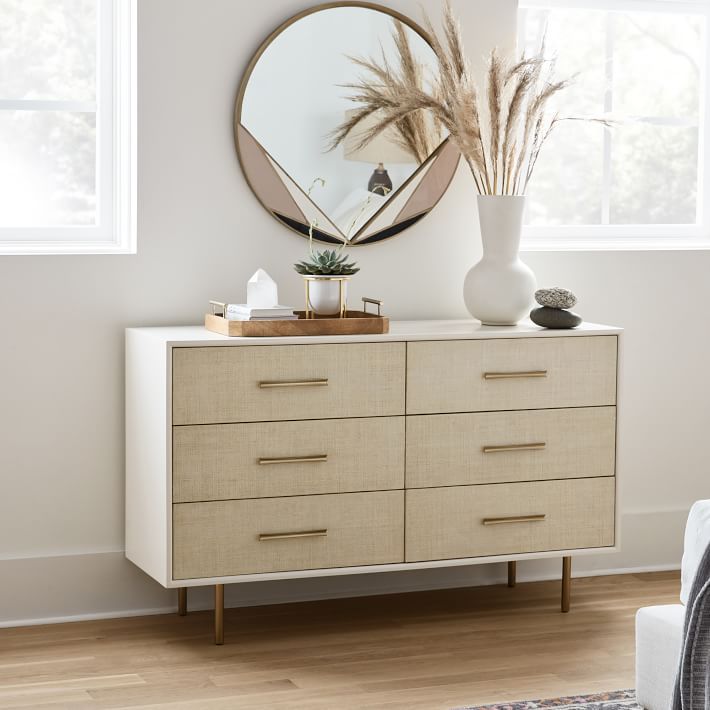When it comes to choosing furniture with drawers, or even selecting internal drawer organizers, two of the most common materials you’ll encounter are wood and plastic. Each material brings its own set of advantages and disadvantages, impacting everything from aesthetics and durability to cost and maintenance. Understanding the pros and cons of wooden versus plastic drawers is crucial for making an informed decision that best suits your needs, budget, and the specific application within your home.
Wooden Drawers: Classic Appeal and Enduring Quality
Wooden drawers, whether crafted from solid wood or engineered wood products like MDF with veneer, offer a timeless appeal and a sense of natural warmth.
- Pros:
- Aesthetics: Wood provides a classic, sophisticated, and natural look that can complement a wide range of interior design styles, from traditional to modern. Its inherent grain patterns and textures add character and warmth.
- Durability and Longevity: High-quality solid wood drawers are exceptionally durable and can last for decades, often developing a beautiful patina over time. Even well-made engineered wood drawers can offer significant longevity.
- Sturdiness: Wood is inherently strong, allowing wooden drawers to hold heavier loads without sagging or warping, especially when constructed with robust joinery.
- Repairability: Minor scratches, dents, or wear on wooden drawers can often be repaired, refinished, or painted, extending their life and allowing for aesthetic updates.
- Resale Value: Furniture with solid wood drawers tends to retain its value better than plastic alternatives.
- Cons:
- Cost: Wooden drawers, particularly those made from solid hardwoods, are generally more expensive than plastic options.
- Weight: Wood is heavier than plastic, making furniture less portable and potentially more challenging to move.
- Maintenance: Can be susceptible to scratches, dents, water rings, and warping due to humidity changes. Requires more diligent care, such as regular dusting, polishing, or oiling.
- Noise: Older or poorly maintained wooden slides can sometimes stick or squeak if not properly lubricated.
Plastic Drawers: Practicality, Affordability, and Versatility
Plastic drawers, often made from polypropylene or other polymers, are a common choice for utility, children’s rooms, and budget-conscious storage solutions.
- Pros:
- Affordability: Plastic drawers are significantly cheaper to manufacture and purchase, making them a very budget-friendly option for various storage needs.
- Lightweight: Plastic is much lighter than wood, making furniture with plastic drawers easy to move, rearrange, or transport. This is ideal for temporary storage or frequently reconfigured spaces.
- Water Resistance & Easy Cleaning: Plastic is inherently water-resistant, making it ideal for damp environments like bathrooms or utility rooms. Spills can be easily wiped clean without fear of damage or warping.
- Versatility in Color and Form: Plastic can be molded into virtually any shape and comes in a vast array of colors, offering extensive design flexibility and vibrant options for children’s rooms or playful interiors.
- Low Maintenance: Generally requires very little maintenance beyond simple cleaning.
- Cons:
- Aesthetics: While designs have improved, plastic often has a less luxurious or sophisticated appearance compared to wood. It can sometimes look “cheap” or utilitarian.
- Durability (Long-Term): While resistant to water, plastic can be prone to cracking, scratching, or becoming brittle over time, especially with exposure to UV light or heavy loads. It may not last as long as well-maintained wood.
- Weight Capacity: Plastic drawers typically have lower weight capacities than wooden ones and can sag or warp under heavy loads.
- Environmental Impact: Depending on the type of plastic, its production and disposal can have a greater environmental footprint if not recycled.
- Odor: Some lower-quality plastics can emit a distinct “plastic” smell, especially when new.
Making the Right Choice
The “best” material for your drawers ultimately depends on their intended use, your budget, and your aesthetic preferences:
- For High-Traffic, Everyday Use, and Longevity: Wood, especially solid wood, is often the superior choice for dressers, desks, and built-in cabinetry where durability and a refined look are paramount.
- For Utility, Children’s Rooms, or Budget-Conscious Solutions: Plastic offers excellent practicality, water resistance, and affordability, making it ideal for organizing toys, craft supplies, or items in damp environments.
- For a Blend: Consider furniture that combines materials, such as wooden frames with plastic inserts for specific storage needs, or vice versa, to leverage the benefits of both.
Conclusion
Both wooden and plastic drawers serve their purpose effectively, but they cater to different needs and priorities. Wooden drawers offer timeless elegance, superior durability, and natural warmth, making them a long-term investment. Plastic drawers provide affordability, lightweight practicality, and ease of maintenance, ideal for more utilitarian or temporary solutions. By weighing these pros and cons against your specific requirements, you can choose the drawer material that perfectly complements your home and lifestyle.


